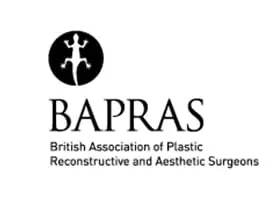For many people, our hairline is more than just a physical feature — it’s deeply tied to how we see ourselves. If you’ve ever felt self-conscious about a high forehead or your hairline sitting further back than you’d like, you’re not alone. For some, hairline lowering surgery offers not just a cosmetic change, but a powerful emotional shift.
Why Consider Hairline Lowering?
Hairline lowering (also known as forehead reduction surgery) is a procedure that gently brings the hairline forward, shortening the forehead for a more balanced facial appearance. People consider it for a variety of reasons:
- They were born with a naturally high hairline
- Hair loss or thinning made the forehead appear larger
- They’re transitioning genders and want a softer, more feminine facial shape
- They’ve simply always felt uncomfortable with how prominent their forehead looks
But no matter the reason, one thing remains consistent: it’s about reclaiming your reflection.
More Than Skin Deep: The Emotional Journey
For many patients, the decision to undergo hairline lowering isn’t just about aesthetics — it’s emotional. Some have spent years hiding their forehead behind bangs, avoiding photos, or feeling their self-esteem chipped away by a feature they couldn’t change.
Here are a few sentiments commonly shared:
“It’s the first thing I see in the mirror, and it makes me feel like I don’t look like myself.”
“People would say I looked tired or surprised all the time — but that’s just how my forehead is.”
“I finally feel like I can wear my hair the way I want.”
This is not vanity. It’s about feeling aligned with your identity, about seeing you in the mirror, and not just tolerating your reflection, but finally embracing it.
What Happens During the Surgery?
Hairline lowering is typically a one-day outpatient procedure. Here’s what to expect:
- Anaesthesia: Usually general or local with sedation
- Incision: Made along the natural hairline (designed to heal discreetly)
- Advancement: The scalp is gently brought forward
- Closure: Skin is closed carefully to minimise scarring
It typically shortens the forehead by 1.5 to 2.5 cm (or more in some cases).
Recovery & Results
Recovery usually takes a few weeks. You may notice swelling, tightness, or numbness at first, but these are temporary. Most patients return to work or social life within 1–2 weeks.
The best part? As healing progresses, the new hairline blends naturally, and scars fade significantly over time.
Is It Right for You?
Hairline lowering surgery may be a good fit if:
- You’re physically healthy
- You don’t have significant hair loss or scalp tightness
- You’ve been emotionally affected by your hairline for some time
Consulting with a qualified facial plastic surgeon is the best first step. Dr Paul or Dr Katia can talk you through your options — including non-surgical alternatives like hair grafting — and what kind of outcome you can expect.
You Deserve to Feel Comfortable in Your Skin
In a world where we’re often told to just “accept ourselves,” it’s okay to say, “I love who I am, but I want to feel better when I look in the mirror.” That’s not weakness — it’s self-awareness.
Hairline lowering isn’t about conforming to someone else’s standards of beauty. It’s about reclaiming your own.
Whether you’re just beginning to explore the idea or ready to take the next step, our lovely team at The Paul Banwell clinic is just one phone call away and we would be delighted to help you.








































25th June 2025
Bringing Confidence Forward: A Personal Look at Hairline Lowering Surgery
Read More
24th June 2025
Lip Lift Surgery: A Subtle Change That Speaks Volumes
Read More
3rd June 2025
Post-Surgery Compression Garments in Plastic Surgery
Read More